
Children participate in “less than half” of private law cases
- Latest News
 Jamie Lennox, Editor, Today's Family Lawyer
Jamie Lennox, Editor, Today's Family Lawyer- June 30, 2022
- 0
- 14 minutes read
A study conducted by the Nuffield Family Justice Observatory has concluded that, in the majority of cases, children have “no (or very limited) opportunity to have their voices heard while the court makes important decisions about their future”.
The Observatory noted that prior research shows “children overwhelmingly feel unheard” in court proceedings, adding that they have a “limited understanding of the court process, the role of lawyers and judges, and their right to be heard (Roe 2021)”.
In conducting their own study on the issue, the Observatory concluded that children formally participate in “less than half of private law cases”, 48% to be exact.
The study sample included 40,753 private family law cases that included a section 8 application that started in 2019/20. The following sections present an analysis of the proportion of these cases where children might have been directly consulted or participated in the 12 months after the case commenced using the four participation markers described above.
Section 7 welfare report (Cafcass)
The most common indication that children are likely to have had their views sought directly is through Cafcass being instructed by the court to undertake a welfare report. As shown in Figure 3 , a section 7 report was completed by Cafcass within 12 months of the case start date in around a third (13,708, 33.6%) of cases. In a small proportion of these cases, 7.5% (3,073), an addendum section 7 report was also filed.
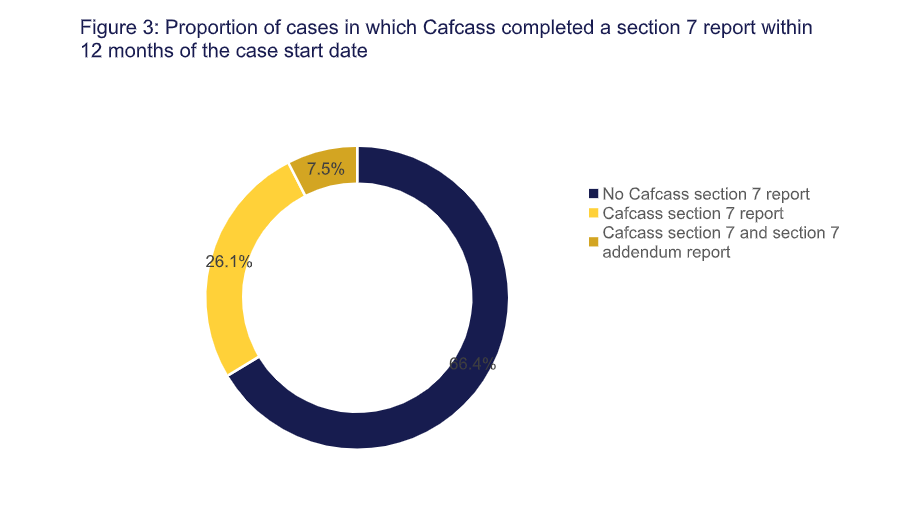
Section 7 welfare report (local authority)
As shown in Figure 4 , a local authority was ordered by the court to undertake a section 7 report in 10% (4,067) of private law cases that started in 2019/20.
While this direction is recorded in the Cafcass data when Cafcass is present at the relevent hearing, the Observatory noted that in most instances where a local authority becomes involved in a private law case, Cafcass ceases its involvement and thus recording of data, so these figures may be an underestimate.
While we might know that a local authority was ordered to prepare a report, no information is available on whether and when it was filed, what it said, or what happened next in the case.
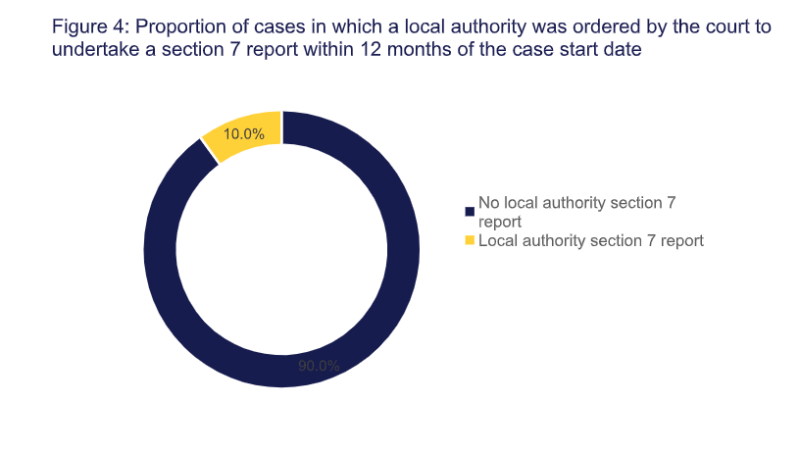
Section 37 report
The court directed the local authority to investigate whether it might be appropriate for care proceedings to be issued in 2.9% (1,168) of private law child arrangements cases that started in 2019/20, as seen in Figure 5.
“It is [again] worth stressing that we have no information on the findings of this section 37 report”, noted the Observatory.

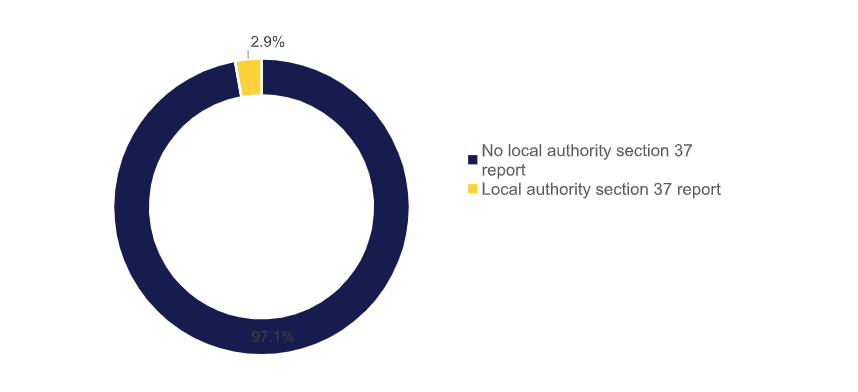
Rule 16.4 (guardian appointment)
As shown in Figure 6 , it is recorded that the judge made the child(ren) party to proceedings in around one in 20 cases (1,881, 4.6%), appointing a children’s guardian under rule 16.4 within 12 months of the case starting.
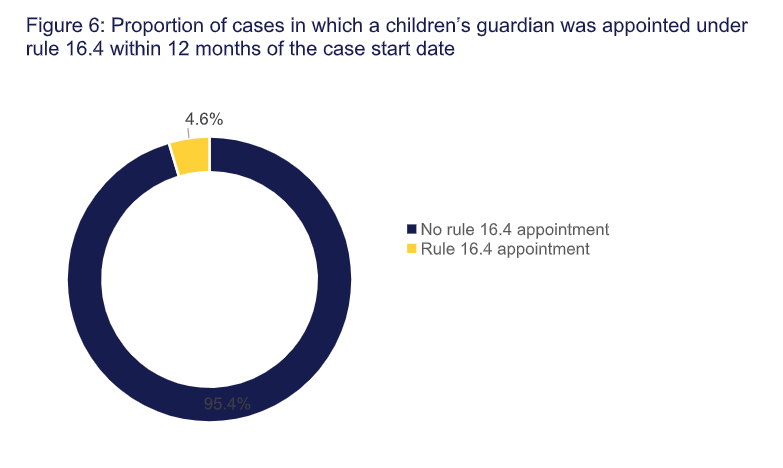
A Cafcass guardian was appointed in 4.5% (1,825) of cases and a NYAS guardian was appointed in 0.1% (48) of cases. In a very small number of cases (fewer than five), it was recorded that the child had appointed their own solicitor.
Cafcass might not always record appointments to external parties, instead recording “no further work for Cafcass” – thus figures may be an underestimate.
Overall indication of a child’s involvement
A case might include one or more of the above markers that children might be expected to have been consulted directly or participated. Almost half (19,532) of child arrangement cases that started in 2019/20 had one or more Cafcass (section 7) welfare report, section 7 or section 37 report by the local authority, or rule 16.4 guardian appointment, within 12 months of the case start date. Again it is worth reiterating that although we have used these as indications of children’s participation, we cannot know that all the children will have been directly involved, or the quality or duration of that involvement. Equally, as mentioned above, children may have participated in ways not recorded in the Cafcass administrative data.
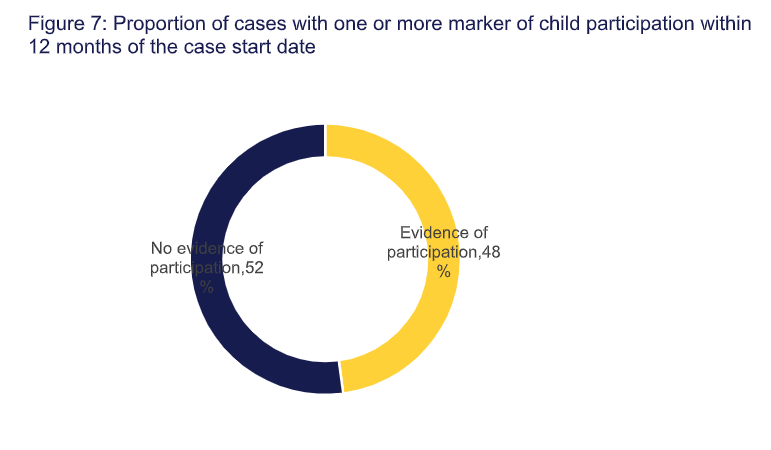
The Observatory did note some limitations to their findings, such as the gaps in Caffcas’ systematically recorded data and the engagements with children which are not currently systematically recorded by Caffcas.
Despite this, they concluded by emphasising the significance of this study’s findings:
“Despite the limitations, the novel findings reported here are important, and begin to paint a picture of children’s involvement in private law cases. There is an ongoing need to develop this area of research so that the family justice system has a greater understanding of how and when children’s views are currently sought and represented. This enhanced knowledge is needed to inform more tailored policy and practice responses, and to ensure that children have the opportunity for their voices to be heard and considered in all legal proceedings that affect them.”
Subscribe to the Today’s Family Lawyer newsletter to receive industry updates, news and analysis










